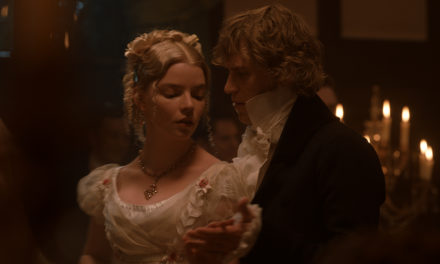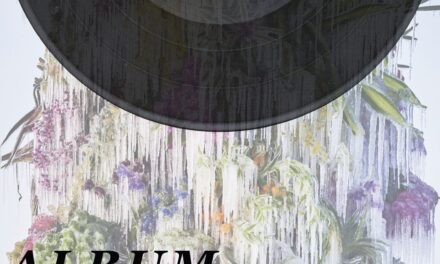“This is an evening of firsts, but this certainly won’t be the last,” declared Beth Michel, associate dean of admission and lead for Native American Outreach at Emory. The new “Each/Other” exhibit at the Michael C. Carlos Museum, open from Sept. 25 to Dec. 12, features the innovative works of contemporary Indigenous artists Marie Watt (Seneca, German-Scots) and Cannupa Hanska Luger (Mandan, Hidatsa, Arikara, Lakota, European), whose works powerfully facilitate the reflection and education of the audience, as the art becomes an active, collaborative practice for each of us to participate in.
There was an electrifying energy in the air of the galleries that evening, vibrating with the excitement of the artists, collaborators and visitors who oversaw the project. Megan O’Neil, faculty curator at the Carlos Museum and Emory art history professor, began the night with a land acknowledgement, a formal statement recognizing that the land under the museum was originally inhabited by Indigenous people. This was one of the first times I had heard a land acknowledgement at Emory, especially with such clear consideration of the historical and current impact of colonialism, coinciding with the new official land acknowledgement recently adopted by the University.
The opening was blessed by Chebon Kernell (Muscogee and Seminole), a traditional and ceremonial leader for the Muscogee (Creek) community, whose ancestral homeland Emory currently occupies. The blessing was followed by remarks from others in the Emory community, who emphasized the exhibition’s message of dialogue, both verbal and non-verbal. “Each/Other” accomplished what many other exhibits have not through the realized vision of museums as representational places celebrating the art of community and storytelling.

Cannupa Hanska Luger and Marie Watt, ‘Each/Other.’ 2020–21. (Denver Art Museum)
The “Each/Other” exhibition not only addresses the role of the museum, but also the role of the artist, by engaging both the artists’ hands and the hands of the community. First, many in the Emory community contributed their time and their hands to the creation of the artwork named after the exhibit, “Each/Other,” as well as Watt’s “Blanket Stories” and Luger’s “Every One.” Community involvement is intrinsic to the work of both Watt and Luger, as they help create shared masterpieces, defying the idea of artists as “owners” or solo “geniuses.” Instead, they can assert their positions as storytellers, sharers, creators, community builders and helpers. Herein lies the true artistic genius of their work.
The theme of collaboration follows the viewer with every turn, be it between students and artists, borrowed and new materials, the past, present and future, textile and sculpture or art and activism. Once the viewer begins to acknowledge and notice this collaboration, the connection between all creatures and times becomes apparent. For example, Watt’s “Trek (Pleiades)” textile blends the historical teachings of the Pleiades constellation with the future science fiction ideology of the starship Enterprise from “Star Trek” using reclaimed wool blankets. Watt articulates that she sees each thread “as a metaphor for how we are all related,” and the physical unity of her textiles and the stitches that compose them sends a potent non-verbal message of “togetherness” as well. We are invited, nay required, to look at ourselves and the community around us.
This reflection of community and collaboration then transforms into action. Just as Luger’s “Mirror Shields” was used during protests of the Dakota Access Pipeline to compel police officers to consider their actions, “Each/Other” necessitates reflection in the viewers. In Luger’s words: “Art is not an object. It’s a process. It’s a verb, not a noun.” Neither viewer, organizer nor artist can be complacent. This exhibit allows for art to truly live up to its highest state: one of action and investment in relationships.
The physical space of the exhibition was also critical to creating a safe environment for reflection. The voices of Watt and Luger come through clearly in the artwork descriptions and quotes printed onto the gallery walls, working in conjunction with the close physicality of the gallery space. The warm-toned grey walls, low ceilings, dim lighting and abundance of textiles achieves a sense of amity and acceptance for all who enter; the gallery reads like a dwelling place, a cradle for these artworks.
The message of “Each/Other” is maintained throughout the Carlos Museum and beyond, as artworks from this collection are also featured in the Arts of the Americas galleries and the Greek and Roman galleries of the Carlos. This embrace continues as you leave the museum, stressing that we walk as temporary residents on a land that is not our own. We are invited to maintain the reflection from this exhibition, instead of just leaving it at the door of the museum.

(Counterclockwise from top left) Cannupa Hanska Luger, ‘Every One.’ 2018. Marie Watt, ‘Skywalker/ Skyscraper (Babel).’ 2012. Marie Watt, ‘Blanket Stories: Great-Grandmother, Pandemic, Daybreak.’ 2021. Marie Watt, ‘Trek (Pleiades).’ 2014.
“Each/Other” was single-handedly the most revolutionary exhibit I have seen, not only at the Carlos, but most other museums from this past year. The artwork demands that action is taken, whether through art-making, conversation or reflection, thereby transforming the visitors into participants. This plea helps shake foundations of denial, oppression and ignorance that have become deeply entrenched in ourselves and in institutions of higher education. “Each/Other” instead invites us as an audience to recognize our connection to fellow humans, creatures and all living things. Like a nostalgic, worn woolen blanket, let “Each/Other” both comfort you and push you out of your comfort zone.
Emory University was founded in 1836 on the historic lands of the Muscogee (Creek) people, 15 years after the First Treaty of Indian Springs (1821) through which the U.S. government acquired this area of land from the Muscogee Nation. After this treaty, many Muscogee people relocated to Alabama and were then forcibly removed to present-day Oklahoma on the Trail of Tears in 1836. We share this acknowledgment of the history of the land to help put a better perspective on the “Each/Other” exhibition and Emory’s commitment to honor Indigenous nations and peoples, both locally and beyond.
Zimra Chickering (24C) is a born and raised Chicagoan who studies art history and nutrition science. She is also a student docent for the Michael C. Carlos Museum, Woodruff JEDI Fellow, educational committee chair for Slow Food Emory, and Xocolatl: Small Batch Chocolate employee. Zimra loves cooking, visiting art museums, photography, doing Muay Thai, drinking coffee, and grocery shopping. She uses writing as an outlet to reflect upon issues and oppurtunities within artistic institutions, and the unique ways in which food and art can act as communicators of culture.






